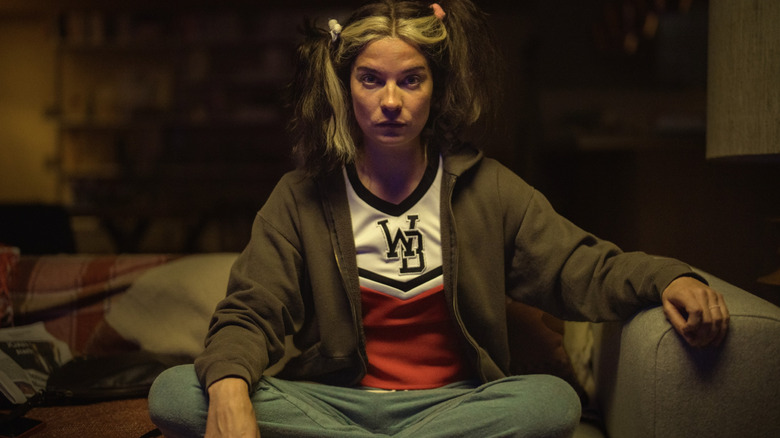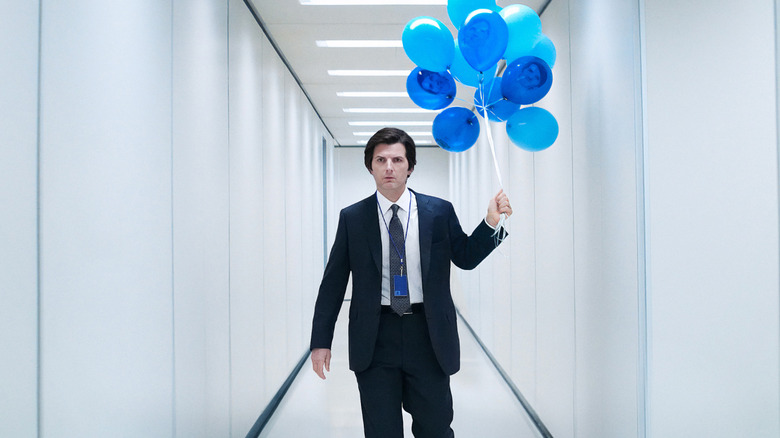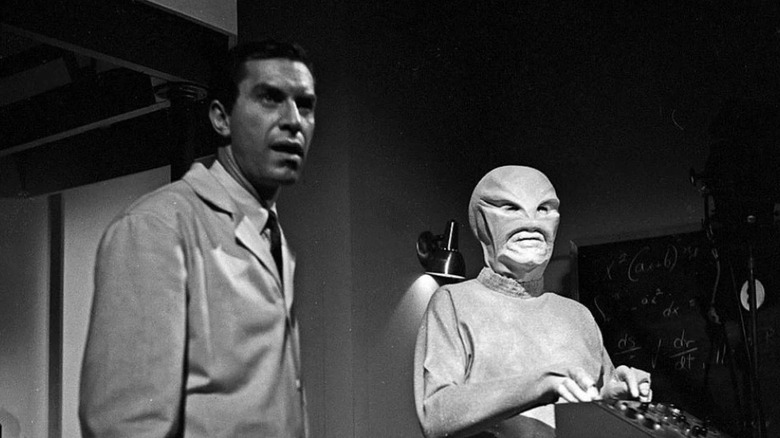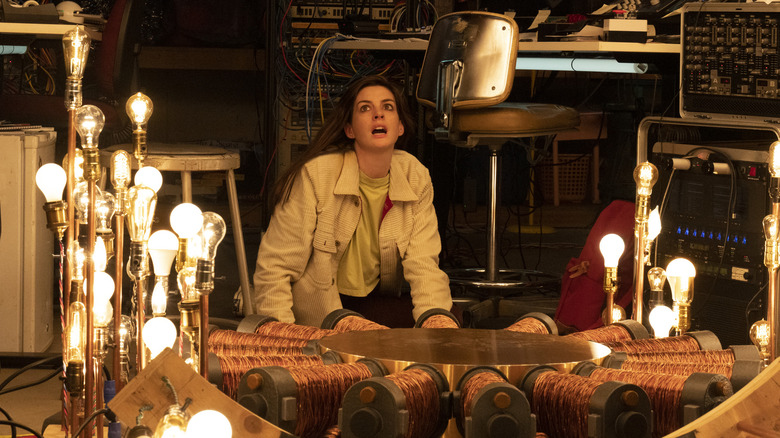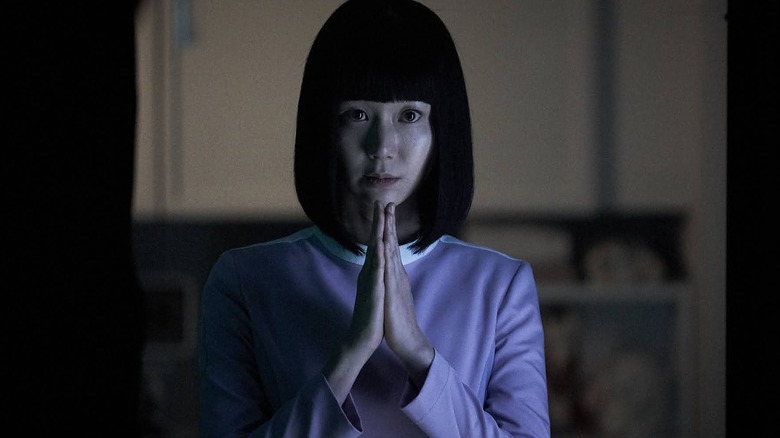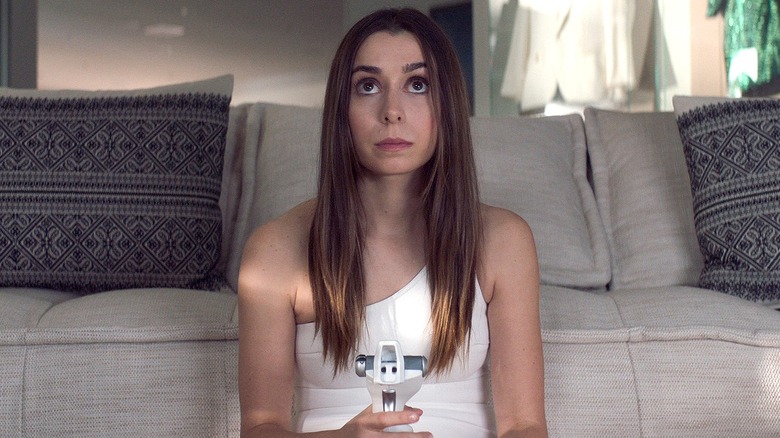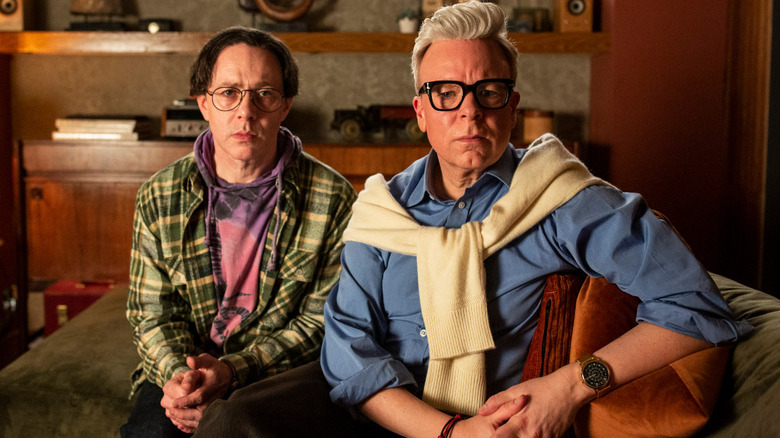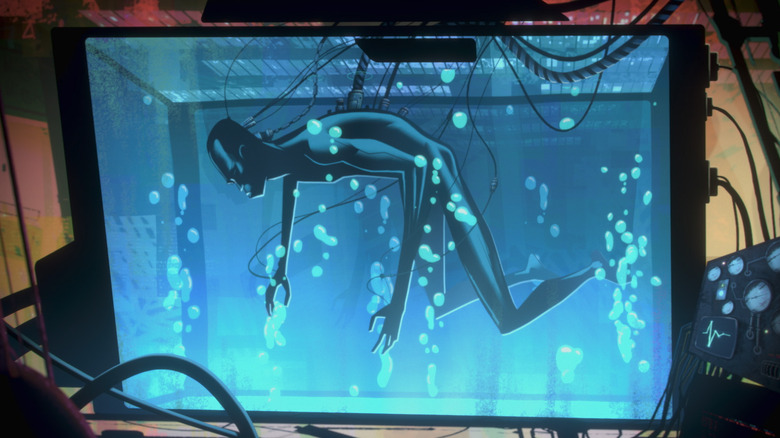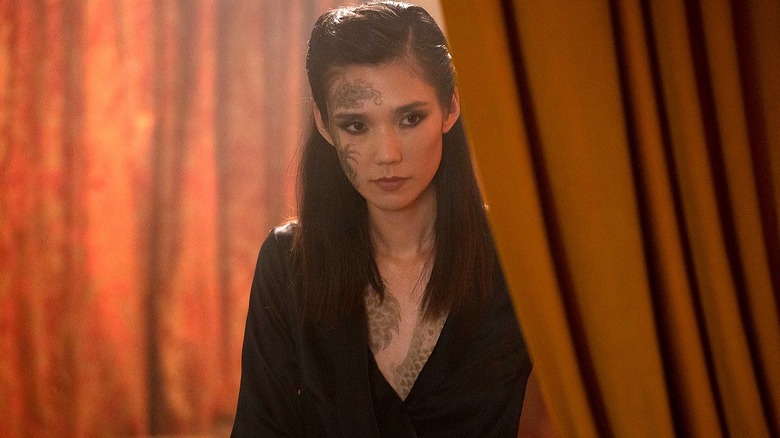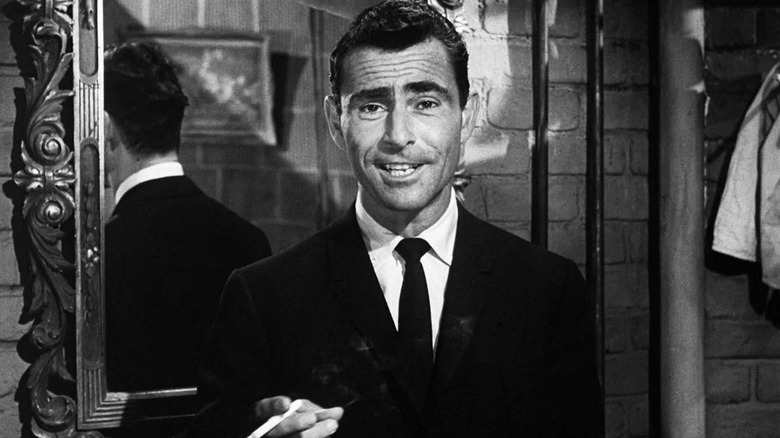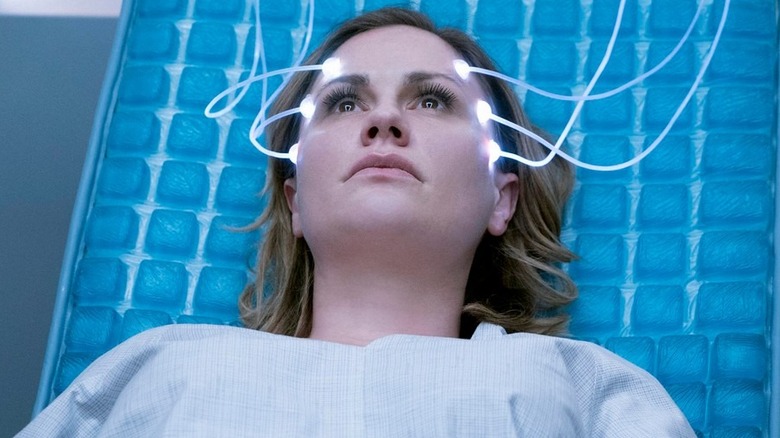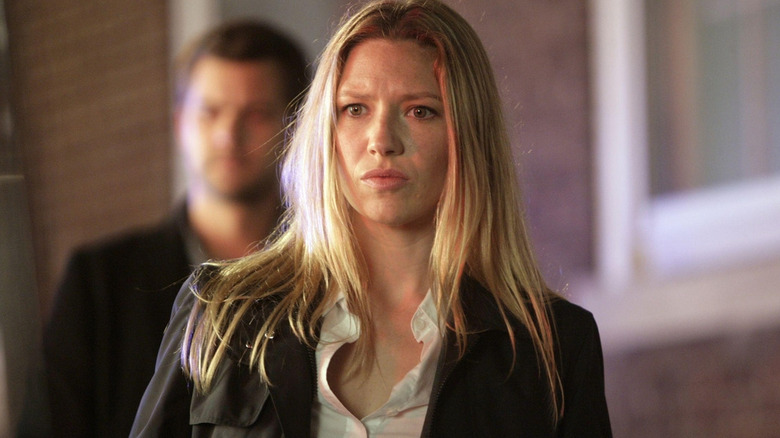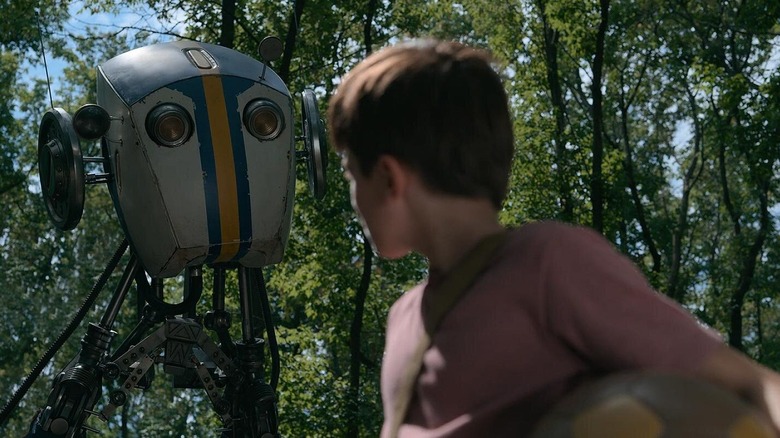12 Best TV Shows Like Black Mirror
The anthology series "Black Mirror" takes audiences on science fiction adventures, typically based in the near future, and each one comes with a cost. In every standalone episode, the main message of the show is clear: beware the use of technology and how it evolves. For example, several stories involve the simple lesson that just because you could implant something in your brain, it doesn't mean you should.
Originally produced by Britain's Channel 4 before moving to Netflix with Season 3, "Black Mirror" focuses not only on technology and society but also on social issues related to how people interact with each other and themselves. Set in realities that typically look much like our own, the show forces the audience to reflect and wonder if the stories could represent possible futures, especially as AI and virtual reality technology become more advanced.
However, since there are only so many episodes of "Black Mirror," fans are left wanting more to watch while they wait for new installments. For those looking to experience similar anthology series or shows that feel like extended "Black Mirror" episodes, here are twelve to add to your watchlist.
Severance
Apple TV+'s "Severance" is a series about the employees of a biotechnology company called Lumon Industries. However, unlike 99% of companies, new hires are required to go through a process called "severance," which allows them to keep work at work, home at home, and not be influenced by their personal lives while on the clock. Their work personality, dubbed the "innie," and their home personality, the "outie," are often essentially different people, since one is rooted entirely in work while the other has the knowledge and history of the person's personal life to inform them.
Though not an anthology series, the basic concept of "Severance" is what audiences would expect from an episode of "Black Mirror." In fact, the show is inspired by the "Black Mirror" episode "White Christmas," which features individuals stuck in a time loop. In that episode, one of the characters, Matt (Jon Hamm), used to help make "cookies," or digital clones of people, a concept similar to "Severance's" "innies."
"Severance" covers similar themes regarding technology, a person's sense of self and identity, and how the system can strip away what makes them unique. It's also an interesting commentary on workplace comedies and incorporates elements of popular media, like the Backrooms creepypasta, creating an award-winning formula that "Black Mirror" audiences are sure to enjoy, especially if you're a fan of shows that play mind games with their audience.
The Outer Limits
"The Outer Limits," another sci-fi anthology, originally premiered in 1963 and aired for two seasons. It was revived in 1995 and ran for another seven seasons before coming to an end in 2002. With a heavy focus on science fiction, "The Outer Limits" boasts a rotating cast that changes with each episode. One of its most acclaimed installments, 1964's "Demon with a Glass Hand," was featured on TV Guide's list of best episodes of TV of all time. Based on a short story by acclaimed author Harlan Ellison, it follows a man with a strange computer for a hand who is sent into the past with the task of gathering his missing fingers.
For "Black Mirror" fans who love plot twists, "The Outer Limits" is for you. While not every episode contains such a swerve, the series is known for the twists that come at the end of episodes. In "Demon with a Glass Hand," the man discovers he is not at all who he thinks he is, which changes how he views his situation. The nature of the anthology, much like the appeal of "Black Mirror," is that if one episode doesn't resonate with you, you can move on to the next, or popcorn around to watch what critics and fans consider the "best" ones, especially with nine seasons to choose from.
Solos
What does it mean to be human? That's exactly the question the anthology miniseries "Solos" explores. Each episode follows a different character, though everyone's stories are intertwined. From a physicist looking for a way into the future and a senior citizen who volunteers to go into space to a man who puts his consciousness into a robot when he dies, there's a bit of something for everyone. Like "Black Mirror," the Amazon Prime show has an amazing cast, and while critics didn't enjoy it as much as the former, audiences have generally enjoyed it.
As a miniseries, "Solos" has an overarching story that features more connections between episodes than other anthology shows included on this list. For those who enjoyed how "Black Mirror's" "USS Callister" episode got a sequel three seasons later, or that Will Poulter's Colin Ritman from "Bandersnatch" reappears in a later episode, "Solos" is the one to watch. It hits on themes that "Black Mirror" regularly explores while incorporating connections between the episodes that result in a unique viewing experience.
SF8
"SF8" is a show that The Korea Times dubbed "the Korean equivalent of the 'Black Mirror' anthology series." A miniseries, each of its eight episodes focuses on a different story, including a robot trying to make an ethical decision about who to save or special antibodies that extend life expectancy. Much of the show focuses on things that take place in virtual spaces, like a dating app or video game, though there are often connections between the real world and the virtual one. Basically, "SF8" tells stories in the same vein as the "Black Mirror" episodes "Nosedive" and "Hang the DJ."
Though it is a limited series, the series involves many of the themes audiences expect from "Black Mirror," including artificial intelligence and shifting realities, presented through confined, episodic stories that leave you wondering what you've just watched. It tackles the question of how technology has impacted our lives, for better or worse, in each scenario, causing audiences to wonder whether they'd use the technology or not. "SF8" is the way to go for "Black Mirror" fans looking for an international offering with a similar intent.
Made for Love
A two-season series, "Made for Love" follows Hazel (Cristin Milioti), a woman who has a tracking device placed in her brain after her divorce so her ex-husband can continue to know everything about her. Not only is he able to track her location, but the device even shares information about her feelings with him. She's "free," but not really. Even her life before the divorce was entirely under his control, as the couple lived in a virtual reality complex for a decade, which they didn't leave once.
"Black Mirror" has aired several episodes that involve implanting something in someone's head or in some way giving up control of your brain, like "The Entire History of You," "Arkangel," and "Common People," making "Made for Love" perfect for fans of the anthology show. Not only does the premise feel like a "Black Mirror" episode, containing similar themes of identity, control, and technology, but it has more time to work through them with the same characters, something that doesn't typically happen in the Netflix series.
Not only does "Made for Love" hit on what makes "Black Mirror" great, but its star, Milioti, appeared in the latter's fan-favorite episodes "USS Callister" and "USS Callister: Into Infinity." Her "Black Mirror" character, Nanette Cole, arguably has a similar experience to Hazel's when her captain, Robert Daly (Jesse Plemons), makes a clone of her that he can force to do whatever he wants after the real Nanette expresses no romantic interest in him.
Inside No. 9
"Black Mirror" began as a British anthology series before its move to Netflix, so it's only fitting for another British series to be on your watchlist while you wait for new episodes. "Inside No. 9" is an anthology show that ran for nine seasons from 2014 to 2024. Each episode is roughly 30 minutes long and in some way contains a reference to the number nine, a callback to the name of the series, which is the only thing that links the episodes together.
"Inside No. 9" is essentially a dark comedy that addresses topics like those featured in the "Black Mirror" episodes "The National Anthem," "White Bear," and "Shut Up and Dance." Like these examples, the dark elements may not be revealed until the end of the episode, leaving viewers trying to understand what they just watched. There are also plot twists that change the direction of the narrative, even when the tone of an episode initially appears to be somewhat light-hearted.
While it may seem like a no-brainer to watch another British show if you enjoy "Black Mirror," "Inside No. 9" is the one to try not only because of its match in tone and topics but because it boasts a 100% from critics and a 92% from audiences on Rotten Tomatoes. With scores like that, it's clear there is something special about "Inside No. 9."
Love, Death + Robots
"Love, Death & Robots" is an animated anthology series in which each episode follows one of the topics in the title. Each story is developed by a different studio in genres that range from comedy to romance to science fiction and more. But while you might think you know what you're in for, since only the themes of love, death, and robots are the possibilities, there's much more to the animated project.
Over the course of its four seasons, "Love, Death & Robots" has hit on topics like werewolves existing but not being accepted by society, the Red Hot Chili Peppers as marionettes, and scientists mutating yogurt. The episodes are shorter than any other option on this list, with an average installment running between ten and 15 minutes. This is perfect for when you want to watch a contained story in less time than it takes to watch a movie or even a half-hour episode of another show.
For "Black Mirror" fans looking for an animated option, "Love, Death & Robots" is the way to go. Though each episode only tackles one of the three titular themes, these are topics that appear often in Netflix's live-action series, like in the love-focused "Hang the DJ," the death-preventing nature of "Common People," and the android of a dead loved one in "Be Right Back." Not every episode is fully animated, with many featuring a combination of media, allowing each episode to truly be its own beast.
Westworld
"Westworld" combines the sci-fi and Western genres across four seasons of television. In an American Old West theme park, robots designed to look like humans ensure that guests have the time of their lives, no matter how dangerous it could become for the robots. The catch is that the lifelike animatronics, called hosts, won't allow a human to be harmed and cannot harm anything themselves. Each robot has a character they play, like a farmer's daughter or a bank robber, and after they perform their programmed tasks, they're rebooted and their memory is wiped.
It's a concept that would make for a great "Black Mirror" episode, especially as it digs deep into the theme of autonomy after a host's erased memories return. They not only learn more about previous lives they led, but another host even tries to take on the role of the hosts' leader and gain the ability to control the rest. The robots take things into their own hands as they become more aware of their situation, changing the direction of the theme park and the world. The entire show is commentary on the concept of autonomy, the use and evolution of technology, and where humankind falls in the hierarchy of it all.
Alas, in something out of a "Black Mirror" episode, "Westworld" was removed from HBO Max just one month after it was canceled, though it has remained available for purchase through services like Apple TV and Amazon's Prime Video. The series wrapped production after four seasons, even though the creators had planned for a fifth season to finish their narrative. Luckily, because Season 4 doesn't conclude on a cliffhanger, it still feels like a complete series, even if it isn't how the show should have ended.
The Twilight Zone
This list would be incomplete without Rod Serling's creation, "The Twilight Zone," arguably the most well-known sci-fi and fantasy anthology television series in history. Each episode tells a contained story as the characters enter the titular Twilight Zone because of an odd event they're experiencing. Accompanying each story is a moral or lesson of some sort and a surprise ending. Part of what makes the show iconic, especially its original run, are the opening and closing monologues from the show's narrator. They provide just enough information before dropping you into the story and sum everything up perfectly at the end.
With four different iterations and over 250 episodes since its debut in 1959, it's an ideal watch for "Black Mirror" fans. While some episodes might venture further into horror or paranormal elements than the Netflix anthology, there's something for everyone. It's easy to watch everything from the start or bounce around and cherry-pick from what are deemed the series' best, most famous, or even most underrated episodes.
The original show features standalone stories that fill the entire episode, while the second iteration that ran from 1985 to 1989 would feature multiple unrelated stories per episode. The third run of "The Twilight Zone," from 2002 to 2003, leaned more into sci-fi/horror tales along the lines of the "Black Mirror" episode "Playtest," and the fourth version of the series was developed in part by Jordan Peele, so fans of hit films like "Get Out" will likely enjoy this iteration.
Electric Dreams
"Black Mirror" fans who enjoy the work of Philip K. Dick, the sci-fi author who wrote the book that inspired "The Man in the High Castle," among other projects, should watch "Electric Dreams." The 2017 anthology miniseries adapts a different Dick short story in each episode, exploring ideas like restricting the neighborhoods that people with telepathy are allowed to live in, a company that makes humanoid robots that feel emotions, and the survivors of a nuclear war fighting a machine for resources.
"Electric Dreams" has an amazing roster of actors, just like "Black Mirror," with the likes of Bryan Cranston and Steve Buscemi lending their talents to the show. There are no connections between episodes, meaning that, like the Netflix show, you can focus on watching the ones that appeal to you and skip the others if you like.
Redditors seem divided on whether "Electric Dreams" is a "Walmart brand 'Black Mirror'" or "a good companion piece," but since the show is based on stories you can read before watching, it's unique among the series included on this list. This gives fans a way to dive back into the material in a different format, something "Black Mirror" doesn't offer.
Fringe
"Fringe" is a sci-fi series that combines the best of police procedurals with "The Twilight Zone." In the Fringe Division of the Federal Bureau of Investigation, a group consisting of a genius, his son, and an agent explore situations and crimes associated with a known parallel universe. However, they aren't using traditional investigative means — they're using fringe science.
While there is an overlying threat that the trio are trying to prepare for, and the show isn't an anthology by any means, it does follow a serialized "mystery of the week" format for a time. But over the span of five seasons, seemingly unconnected stories eventually merge together as new information comes to light. It's entirely different from "Black Mirror," but in the best ways. Audiences get to see the same characters over and over again in different stories until they all come together, making for an interesting and rewarding viewing experience.
The alternate timelines of "Fringe" are what gives it a vibe similar to "Black Mirror." The intrigue of an episode like the latter's "White Bear" is that we know the main character will relive the day over and over again, but we as an audience will only see that experience once. With "Fringe," we get to see that repetition and change, providing something "Black Mirror" doesn't offer while being rooted in similar subject matter.
Tales from the Loop
Take a trip to Ohio and an underground experimental physics facility in the 2020 science fiction series "Tales from the Loop." The show follows the people who live in the town while the scientists below attempt to understand the universe and its mysteries through the use of a machine called the Loop. The story involves odd phenomena like rocks that don't follow the Earth's laws of gravity, a device that lets people body swap, and the exploration of events happening in a parallel universe. Based on an art book of the same name by Simon Stålenhag, the writers' room built its stories that expand on the ideas found in Stålenhag's paintings.
The Amazon series hits on topics that you could easily imagine as "Black Mirror" episodes as it explores the intersection of humanity and technology. These themes come up often in the Netflix project, but seeing them in "Tales from the Loop's" small-town America setting provides a new lens through which to view them. While watching someone realize their child's friend is actually them from a different point in time initially feels like a "Back to the Future" type of twist, it also evokes the revelation the last five minutes of an episode of "Black Mirror" would unveil to leave audiences questioning everything.
